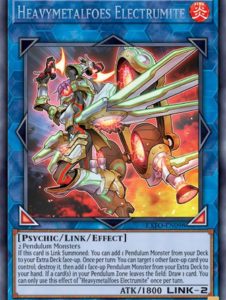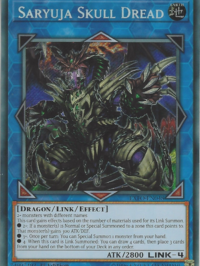Metagame Report – March 2018

Hello everybody, I’m Jared Stone and this is my first article for United Gosus.
In this article I’ll be talking about how the meta changed after the new forbidden/limited list, about how the format has developed over the past two YCS since then. Finally, I’ll talk about the recent and upcoming product release that could impact the meta even more.
How the banlist affected the meta:
As many of you will know, SPYRAL was dominating the TCG meta for 2 formats. If you weren’t playing SPYRAL, you would have struggled against anyone else playing the deck. Hand traps became the backbone of many decks, crucial to stopping the deck.
The new list limited SPYRAL Resort, which made the deck more fragile, less consistent and easier to beat after their initial play was stopped. They now have less chance to resolve SPYRAL Master Plan and that prevented the deck from being able to keep momentum.
Pendulum was a deck that was strong while SPYRAL was dominating, with SPYRAL now being weakened, Konami also felt it was important to hit pendulum magician.
Performapal Skullcrobat Joker and Double Iris Magician were both banned. These hits were an attempt to make pendulum magician lose some consistency in getting those strong field set ups. This was a very fair hit, as the deck was able to consistently create boards that were hard to break.
None of the other changes drastically changed the meta. With these new changes, the meta was left wide open – so many decks could now thrive again, since the hits to SPYRAL and magician slowed them down.
The meta at YCS Atlanta:

Leading up to the YCS, there was a lot of of discussion about which deck would win. SPYRAL seemed to had lost all the hype it once had. This meant hand traps had to be reconsidered, especially since there was no way to be sure of which hand traps would be most effective in the new meta. Pendulum seemed to be the deck of choice for many, especially with the release of Heavy Metalfoes Electrumite. This card replaced the consistency the banlist took away from the deck. This made pendulum powerful as the deck still boasted consistency and power. Not many other decks had consistency on their side.
The top 32 cut had 8 different decks, which was refreshing considering SPYRAL was dominating so largely before.
Pendulum emerged victorious at this event, it was also heavily represented and thus it became the new deck to beat.
After the event, some of the players who topped shared the knowledge of pendulum having the ability to FTK (first turn kill). These decks are often the scariest in the format, as they don’t even let you have a shot at playing.
This created a problem leading up to YCS Bochum. Pendulum was clearly the best choice, but it couldn’t really afford to main hand traps for the mirror match as this would affect consistency in pulling off the FTK or combos going first. Hand traps are the only way to prevent the FTK, would it really just be a dice roll format? This also meant any non FTK strategy would probably have to main hand traps in an attempt to limit that players options if they went first. This makes the other decks slightly less consistent, as they have to play non engine cards to keep up with the power of the FTK.

However, if players weren’t playing the FTK, the hand traps wouldn’t be effective against established pendulum boards.
The meta at YCS Bochum:
With everyone now in the know about FTK/pendulum being the deck to beat, hand traps were again mandatory in most decks. The meta hadn’t changed much aside from there being a clear deck to beat.
The top 32 cut was even more diverse than YCS Atlanta, which was a shock to many. This was also a positive sign that any deck had the potential to top/win.
Pendulum still took the most spots in top cut as expected. However, only 2 FTK decks made it. This is likely as players prepared for this strategy heavily. True Draco gained more popularity, mainly because it could break boards going second and it could utilise floodgates better than any other deck in the format. This allowed Draco to stand up to the meta in a way not previously seen. The biggest trend was the use of Amano-Iwato. This card enables Draco to ‘freeze’ boards, turning off every monster effect. Combined with Draco’s spells and traps, players had no problems vs established boards. Amano-Iwato also stopped hand traps from affecting the Draco player if they went first, so this put the deck in a unique position.
The top 8 had 7 different decks, this was insane. This really proved the game became much more diverse and that you could probably do really well, as long as you knew your deck.

The biggest shock from this event was Word Chalice winning. The deck had little representation before this YCS, but it clearly has a lot of great plays. It gained a lot of power from Saryuja Skull Dread, which enabled the deck to extend its plays easier because of its good arrows and amazing effects. Because this success was so unexpected, it has made many people reconsider the meta. Will this be a one time success for the deck, or will it become a new contender in the meta?
This YCS was the strangest in a long time. It completely defied expectations. Who knows what will happen at the next event?
Product releases:
With the newly released Legendary Collection Kaiba, there are many great reprints. Players now have more access to those all important hand traps, which continue to be a vital asset to any meta deck. This has made cards needed for tournament play much more affordable and could help many duelists to compete in tournaments. With the recent YCS results, it’s clear rogue strategies can hold up against the meta. Could these reprints create more opportunity for those non meta strategies to shine?
Thanks for reading and that concludes my article, I hope you enjoyed it!











You must be logged in to post a comment.